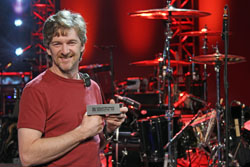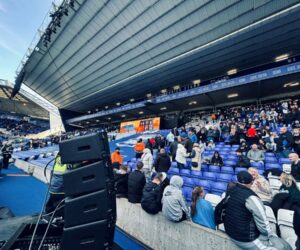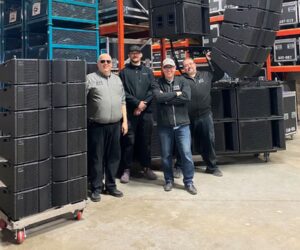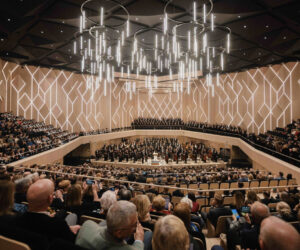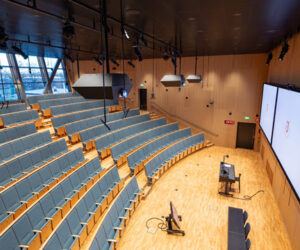Randy Lane, the front of house engineer for the “Play On” tour, is the guy responsible for ensuring great sound and glitch-free performances.
To help ensure the best possible sound for a number of stringed instruments, Lane depends on the Type 10 DI from Countryman Associates.
Lane is a veteran FOH engineer. In addition to his current duties with Ms. Underwood, his credits include work with the Spin Doctors, Three Doors Down, Joe Satriani, Steve Vai, and Julio Iglesias to name but a few.
Working on Underwood’s “Play On Tour” in conjunction with monitor engineer Cam Beachley, Lane is responsible for all that the audience hears.
Long cable runs from the stage to the FOH mix position can wreak havoc with the quality of the signal—resulting in RF interference, hums, loss of fidelity, and worse. This was the problem Lane encountered with a number of stringed instruments like acoustic guitars, fiddle, and bouzouki.
Underwood’s opening act, Sons of Sylvia, encountered similar issues with their instruments. The Countryman Type 10 DI solved the problem, and Lane is very pleased with the results.
“The goal of a FOH mixer is to translate the sources the band provides as accurately as possible,” Lane said. “To this end, the Type 10 reproduces the instruments as if I’m standing right beside them.”
“When I initially evaluated the Type 10, one of the tests I conducted involved standing next to each instrument to listen to the way it sounded naturally. I then connected the Type 10 and listened closely once again. In each case, these instruments reproduced faithfully to the source when connected through the Type 10. I was very impressed.”
“Countryman’s products are legendary for being rugged on the road,” he said. “The build quality of the Type 10 is no different and it has several features to ensure mishaps in wiring and switch positions are kept at a minimum.”
“Other manufacturers have switches and buttons that are far too accessible and can be accidentally moved during performances, which can be catastrophic for artists using in ear monitoring systems. One wrong switch and nearly 30 times the level can be applied to an input—with devastating results. The Type 10 ensures that if the switches are moved, it was intentional.”
One specific challenge the Countryman Type 10 DI helped resolve, said Lane, was RF, “We have moving risers on this tour for the band members to change positions during the show.”
“These risers are moved with large electric motors that generate intense RF fields and this noise was being picked up by several of the band’s inputs. Once we changed to the Countryman Type 10, the issue was eliminated.”
“The change to the Countryman Type 10 was made in the middle of the tour and the results were stunning at first listen,” Lane said.
“My console EQ went from creatively trying to place the instrument and make it sound real and believable to flat on the channel strip and absolutely sounding like the instrument itself—as if a straight connection to the instrument was what we had. I was no longer fighting for ‘space’ for the instrument to fit. With the Type 10 DI, it fit into the mix right away.”


